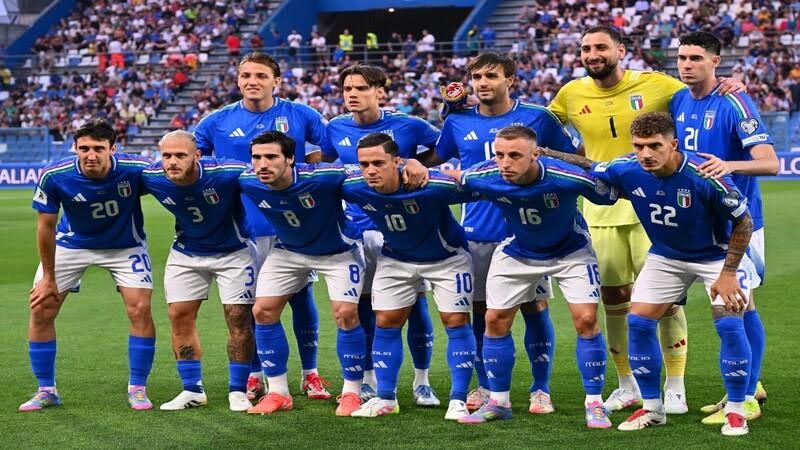Before lifting the World Cup trophy in Berlin, Italy walked through fire. Their 2006 journey was filled with scandal, pressure, and doubt. Yet, from that turmoil, they built unity and strength. Watching those matches today on Xoilac https://www.buildingmaterialsandclimate.com/ reminds fans that belief can rise even in the darkest time.
The storm before the triumph
In early 2006, Italian football faced one of its worst crises. The Calciopoli scandal shattered Serie A’s credibility and damaged national pride. Players were questioned. Fans turned skeptical. The Azzurri entered the World Cup with heavy hearts and an uncertain future.
The Calciopoli scandal that shook Italian football
Calciopoli and the crisis of credibility
When the news broke about referee manipulation and club corruption, the shock was immense. Juventus, Milan, and other major teams were caught in the storm. The headlines painted Italian football as broken. Even before a ball was kicked in Germany, critics predicted failure for Italy.
Inside the squad, players faced constant questions about loyalty and honesty. The situation forced them to turn inward, drawing strength from each other rather than the outside world.
Lippi’s leadership under pressure
Marcello Lippi became the calm within chaos. His management style relied on respect and collective spirit. He refused to let outside noise affect preparation. Instead of star names, he focused on team chemistry. Each player understood his role clearly.
Lippi built around a solid defensive core led by Cannavaro and Buffon. Creative energy came from Pirlo, Totti, and Camoranesi. The mix between resilience and flair became Italy’s secret weapon.
See more: https://www.buildingmaterialsandclimate.com/top-ghi-ban/
The nation’s determination to restore pride
The team carried the weight of millions. Every goal, every tackle, every save felt like a step toward redemption. Italians wanted their football to stand for passion again. The World Cup became a mission, not only for victory but for dignity.
The first matches showed the team’s character. They were organized, efficient, and mentally tough. The more the pressure grew, the more united they became.
The path through Germany
Italy’s World Cup run was built on tactics and emotion. They played without arrogance but with quiet belief. Each round tested their patience and discipline, especially against stronger opponents.

Italy’s 2006 World Cup squad
Defensive perfection and tactical balance
Italy conceded only two goals in seven games. One was an own goal, another came from a penalty. Buffon stood like a wall. Cannavaro cleared every cross with authority. Even full-backs like Zambrotta and Grosso contributed to both defense and attack.
Their discipline allowed Pirlo and Gattuso to control midfield. Italy’s counterattacks were fast and precise. They played with intelligence, not chaos.
The key matches that shaped destiny
The quarterfinal against Ukraine built momentum. But the semifinal against Germany defined the campaign. Ninety minutes passed without a goal, yet Italy stayed patient. Then, in extra time, Fabio Grosso curled in a stunning strike. Seconds later, Del Piero added another. The silence in Dortmund turned into disbelief. It was one of Italy’s greatest nights.
Every player contributed. Every substitution mattered. It felt like destiny unfolding.
The final against France
In Berlin, the tension reached its peak. Zidane opened the scoring with a cheeky penalty. Materazzi equalized soon after. The rest of the match became a battle of minds and nerves. Then came Zidane’s headbutt, a shocking moment that changed everything.
Italy stayed focused. When the match went to penalties, they were ready. Grosso stepped up for the final kick. He placed it calmly into the net, and Italy became world champions once again.
Redemption and national rebirth
That night in Berlin marked more than a sporting success. It symbolized the resilience of a nation. Italy had fallen into scandal but rose with unity and courage. The players’ tears reflected years of struggle and a nation’s relief.
Cannavaro’s leadership and the golden defense
Fabio Cannavaro embodied the spirit of 2006. He was strong, composed, and unbreakable. Without scoring a goal, he became Italy’s most vital player. His performances earned him the Ballon d’Or later that year, proving that leadership and consistency can outshine fame.
The entire backline deserved praise. Buffon, Zambrotta, Materazzi, and Grosso formed one of the greatest defensive units ever seen in a World Cup.
The emotional aftermath back home
When the team returned home, Italy exploded in celebration. Millions filled the streets waving flags and singing. For once, scandal was forgotten. The world saw the joy of a country reborn through football.
Children wore blue shirts proudly. Families gathered around TVs replaying the final again and again. The team became national heroes, symbols of unity after division.
Lessons from a dark-to-light journey
Italy’s 2006 triumph teaches that greatness grows from adversity. They turned shame into strength, anger into motivation. The experience shaped a generation of players and coaches who believed in teamwork above all.
Even years later, that victory remains a reminder of resilience. It showed that no scandal can destroy true spirit if a team stands together.
Conclusion
Italy’s 2006 World Cup journey remains one of football’s most inspiring stories. It started with disgrace but ended in global admiration. Through discipline, leadership, and courage, the Azzurri rewrote their narrative. Every time fans rewatch those moments, they relive the power of belief and redemption that defined Italy’s road from chaos to glory.
